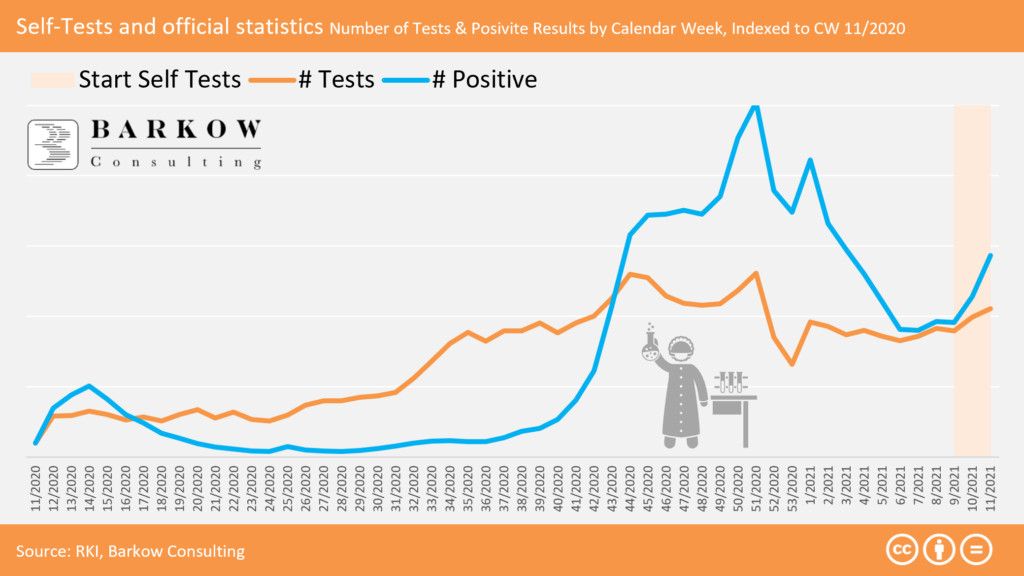How Do Self-Tests Impact Official COVID19 Statistics?
During the corona pandemic the role of testing and test frequencies has often been fiercely debated. The most recent improvement in the test regime is making self-tests widely available to the public via pharmacies, test stations and even supermarkets.
It is likely that this regime change will impact official infection numbers. However, while we can expect a rise in infection numbers due to more testing unveiling cases that otherwise would have gone undetected, we should also observe changes in the rate of positive tests. Self-tests are likely to serve as a pre-selection mechanism and therefore increase the number of positive official tests.
In the approximately three weeks since the introduction of self-testing we can already see positive corona tests growing more strongly than the underlying number of tests.
Obviously, three weeks are not enough time to draw a final conclusion and other drivers such as an increase of mobility or more aggressive virus mutations are being discussed. The vaccination program seems effective in preventing infection high risk groups. However, with the spread of the B.1.1.7 the virus became more infectious and dangerous for younger people and total vaccination rates are currently too low. And while there seems to be an initial correlation between self-testing and rise in positive official tests, the number of hospitalizations also started to increase again. This indicates the increase can probably not solely be attributed to the changes in test strategy.
With currently missing data on self-tests we are left to speculate rather than drawing definite conclusions. To improve the understanding of the data more information of how many official tests were preceded by a self-test would be crucial. Unfortunately, we have to add this to the long and even growing list of missing COVID19 data…




